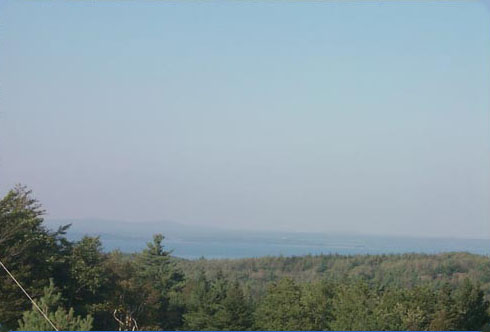About Haze


Why Should We Care About Air Pollution?
Everyone breathes. The average healthy adult breathes 3,500 gallons of air each day. Exercising or playing outdoors on unhealthy air days can reduce lung function by as much as twenty-percent. Children are at even greater risk because they are smaller, more active, growing, and their respiratory systems are still developing. The elderly become more sensitive to air pollution as their susceptibility to infections like influenza and pneumonia increases.
What Is Being Done?
The National Park Service is committed to improving visibility at parks through outreach and education to visitors and by monitoring air quality across the country. The National Park Services web site has more information on its programs and photos from onsite, on-line cameras at scenic vistas around the country. The Clean Air Act (CAA) is a comprehensive law that addresses major air pollutants and air toxics. The CAA authorizes the U.S. Environmental Protection Agency (EPA) to address visibility in federal Class I areas (national parks and wilderness areas). In 1999, the EPA issued requirements for states and interested tribes to address haze caused by numerous sources over large geographic areas. Five regional planning organizations (RPOs) were established by the EPA to assess the impacts of different pollution sources on visibility. The RPO for the Mid-Atlantic and Northeast region is MANE-VU (Mid-Atlantic and Northeast States Visibility Union). MANE-VU facilitates the development of regional strategies to address regional haze and coordinates with other regions.
What Is Regional Haze?
Air pollution, including particulates (soot) and related gases (nitrogen dioxide and sulfur dioxide) can scatter and absorb light, limiting the distance that one can see and obscuring color and clarity. Visibility can often be reduced over large regions, and is therefore called Regional Haze. Haze makes the outline of a skyline or a natural vista difficult to see. Above are pictures of a scenic outlook at Lye Brook Wilderness Area on a clear day and on a day when visibility is reduced. The figure below show the way light may be scattered or absorbed to obscure visibility. For more technical information, please refer to the following documents:
Where Does Air Pollution Come From?
Air pollution comes from many sources, from human activity such as manufacturing and transportation, and from natural sources such as volcanoes. Sources may be "stationary," such as a smelter or power plant, or "mobile," such as a car, bus, or train. Smaller air pollution sources include consumer and business activities such as dry cleaning operations and lawnmowers. Pollution may be emitted directly into the environment (primary pollutants) such as soot from diesel and wood combustion. Pollutants may also form in the atmosphere (secondary pollutants) from gaseous emissions like sulfate from sulfur dioxide emission (SO2) or nitrates from nitrogen oxide (NOx) emissions. For example, when nitrogen oxides react with volatile organic compounds (VOCs) in the presence of heat and sunlight, ground-level ozone or smog is formed. In the summertime, ground-level ozone can accumulate to reach unhealthy levels in urban, suburban, and rural environments. Another problem caused by air pollution is acid deposition. Nitrates and sulfates that fall to the earth attached to particles (dry deposition) or as acid rain (wet deposition) can increase the acidity of aquatic environments such as the Chesapeake bay, harming marine life and aquatic plants. Sulfur and nitrogen oxides may be transported long distances, eventually depositing compounds such as particulate matter (sulfates, nitrates) and related gases (nitrogen dioxide, sulfur dioxide, nitric acid) sometimes great distances from their original source.
What Can I Do?
Get involved and become informed. Decisions your local, state, and federal representatives make may have an impact on air quality. Public involvement is key to sound policy decisions. Choices you make about transportation, products you buy, and energy use can also make a difference.

